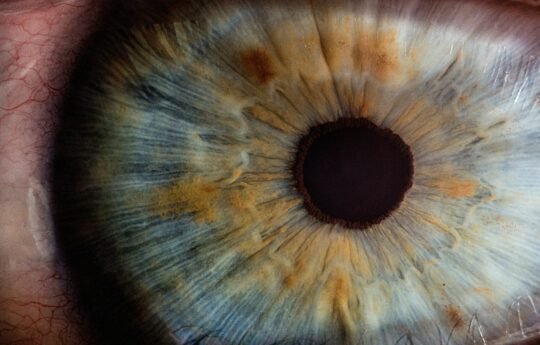
Exceptional Eye Care Services at Portland Eye Clinic
Comprehensive Eye Exam
Maintaining optimal eye health is crucial, yet many people overlook the importance of regular eye exams. A comprehensive eye exam plays a pivotal role in ensuring that your vision is at its best and can help detect underlying health issues early. Whether you are experiencing vision problems or not, scheduling a routine eye check-up with an optometrist is a responsible step.
What to Expect During a Comprehensive Eye Exam
A comprehensive eye exam is more than just a vision test; it is a thorough evaluation of your eye health. Knowing what to expect can be helpful and ensure that your appointment goes smoothly and effectively. Below are the key components generally involved in a comprehensive eye exam.
Pre-Exam Procedures
Before diving into the more detailed assessments, you will undergo some preliminary procedures:
– Medical History Review: The eye doctor or optometrist will gather information about your general health, eye health history, and any vision issues you may be experiencing. This guide them in tailoring the exam to your specific needs.
– Current Vision Prescription Review: If you currently wear glasses or contact lenses, it’s important to bring them along so the optometrist can evaluate your current prescription effectiveness.
– Initial Eye Health Assessment: Basic tests like measuring your eye pressure, often done via a puff of air or a handheld device, are aimed at identifying any immediate concerns or abnormalities.
Vision Tests
During this phase, various tests are performed to assess your vision acuity and eye coordination:
– Visual Acuity Test: Using an eye chart, this test measures your ability to see clearly at varied distances. It helps determine your need for glasses or contact lenses.
– Refractive Assessment: This test identifies the lens prescription required to correct vision problems like nearsightedness, farsightedness, or astigmatism.
– Eye Muscle Function: A series of eye movement tests help evaluate the function of the muscles surrounding the eye, ensuring they work well together.
Eye Health Evaluations
This crucial segment assesses the overall health of your eyes:
– Slit Lamp Examination: A specialized microscope examines the structures at the front of the eye, including the cornea, lens, and eyelids, to detect any signs of damage or disease.
– Retinal Examination: Dilation of the pupils allows the optometrist to examine the retina and optic nerve, assessing for conditions like glaucoma or retinal disorders.
– Peripheral Vision Test: This test identifies vision loss in the outer edges of your field of view, which can be an indicator of various eye conditions.
Importance of Comprehensive Eye Exams
Understanding the significance of comprehensive eye exams is essential for preserving eye health and overall wellness. Here are some important reasons why regular eye exams are critical.
Early Detection of Vision Problems
Regular comprehensive eye exams are instrumental in detecting vision issues early, often before you notice any symptoms. Early intervention can prevent further deterioration and lead to more effective management of conditions.
Identifying Underlying Health Issues
Comprehensive eye exams can potentially reveal signs of systemic health issues, such as diabetes and high blood pressure. Changes in your eye health may be indicative of these conditions, allowing for timely medical referral and intervention.
Maintaining Overall Eye Health
Even if your vision is clear, annual eye exams are essential for monitoring for early signs of eye diseases that occur with aging, like macular degeneration or cataracts. Routine care helps ensure your eyes remain healthy throughout your life.
Ideal Frequency for Eye Exams
Keeping up with a annual eye exam schedule is crucial for maintaining eye health and ensuring early detection of potential issues. The frequency of comprehensive eye exams can vary based on age, risk factors, and overall health.
Age-Related Recommendations
The American Optometric Association provides guidelines on how often individuals should undergo vision checks depending on their age group:
– Children (3-5 years old): Routine eye exams should be conducted at least once between ages 3 and 5 to check for conditions such as amblyopia or “lazy eye.”
– School-Age Children (6-17 years old): Annual eye exams can help ensure that children maintain optimal vision during their school years, which is crucial for academic performance.
– Adults (18-39 years old): It’s recommended to have an eye exam every two years. Regular checks help identify any early signs of vision problems and ensure updated prescriptions when necessary.
– Middle-aged and Older Adults (40 years and above): As we age, the risk of developing age-related eye conditions increases, such as presbyopia, cataracts, and glaucoma. An annual comprehensive eye exam is advisable for early diagnosis and treatment.
Risk Factors Affecting Exam Frequency
Certain risk factors might necessitate more frequent eye exams for individuals of any age:
– Family History: If there’s a history of eye diseases such as glaucoma or macular degeneration, more frequent monitoring by an eye doctor is wise.
– Chronic Conditions: Health conditions like diabetes and hypertension can significantly impact vision, requiring regular eye care.
– Vision Corrections: Those who wear glasses or contact lenses may need annual eye exams to ensure their prescriptions are up-to-date.
– Occupational Risks: Jobs that involve prolonged screen time or exposure to bright lights can strain the eyes and necessitate frequent vision checks.
Creating a Personalized Eye Care Schedule
To determine the most beneficial eye exam schedule, consult our optometrists who can assess your individual needs. This personalized approach ensures that your vision care plan factors in your unique health profile, lifestyle, and any hereditary considerations. A tailored schedule can help you maintain clear, comfortable vision and prevent any future complications.






